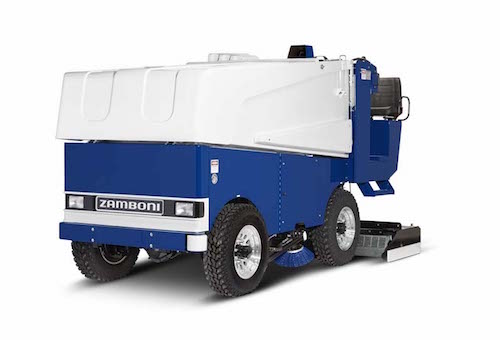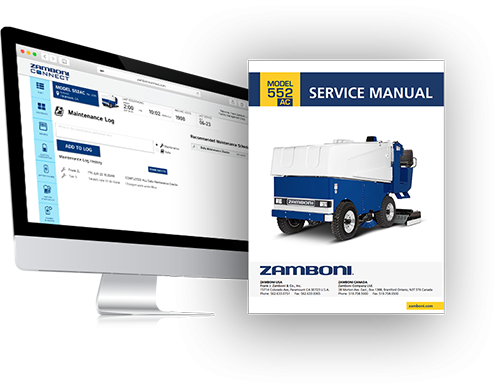Just like Google has become a verb for Web searching, Zamboni is a brand that’s become synonymous with the act of ice resurfacing, especially in the world of hockey.
Now that familiar “brand as a product” is skating into new territory: Taking the first steps to offer its famous ice resurfacer as a product-as-a-service, leveraging Internet of Things (IoT) sensor technology, big data, and a mobile app to help its customers minimize downtime and optimize performance.
 Zamboni is skating into product-as-a-service territory. Image Courtesy of Zamboni
Zamboni is skating into product-as-a-service territory. Image Courtesy of ZamboniWith the help of Digi International’s professional services team, Zamboni created a custom IoT app that collects in near-real-time data from sensors on the ice resurfacer to give owners and operators intelligent insights into the performance of their equipment so they can make better decisions regarding maintenance and operations. The system uses Digi’s Wireless Vehicle Bus Adaptor, a rugged plug-in device designed to provide easy access to vehicle data via WiFi and web services, to track vehicle-specific information such as speed, energy consumption, and water levels being used, arming operators with better insights to adjust operation and do more proactive maintenance, according to Tracy Roberts, vice president of services at Digi.
“Just like any other piece of heavy equipment, customers are looking to do a better job maintaining assets and get longer life out of them,” Roberts explains. “Having real-time data for maintenance managers to understand how the machines are working—how long it takes to resurface a rink, the water levels being used, or battery and gas consumptions—all of this helps them look at where they can become more efficient and reduce costs.”
In addition to the Digi platform, the Zamboni Connect service is built around a mobile app that serves up a series of dashboards that monitor key metrics and issue alerts and diagnostic trouble codes when a problem occurs. The system keeps a log of all maintenance activities, which can be referenced at a later date, and features a digital resource center of maintenance documents so operators have on-ice access to instructions based on diagnostic codes, further streamlining their efforts.
 Created with the help of partner Digi International, the IoT-enabled Zamboni Connect collects real-time vehicle data to enable preventive maintenance. Image Courtesy of Zamboni
Created with the help of partner Digi International, the IoT-enabled Zamboni Connect collects real-time vehicle data to enable preventive maintenance. Image Courtesy of ZamboniWhile the Zamboni team focused on the design of the mobile app and user experience, Digi’s role was structuring and integrating the data so it that it’s in a format that is accessible to the web and mobile apps, Roberts says.
While Zamboni is leveraging the IoT data to develop insights to streamline the maintenance process and enable more efficient fleet operations, Roberts says other customers are also using similar streams of data to enhance the design process. “Customers that are more advanced in the process are regularly taking end user stats and feeding them back to the design team,” she says. This affords them direct insight into whether a particular piece of equipment fails more regularly under certain climate or usage conditions, she explains, or what the average mean-time between maintenance cycles is.
Says Roberts: “At the end of the day, what it means is they are looking at all the data to build a better mousetrap.”
Watch this video for highlights on the Zamboni Connect services.
About the Author
Follow Robotics 24/7 on Linkedin
Article topics
Email Sign Up
















